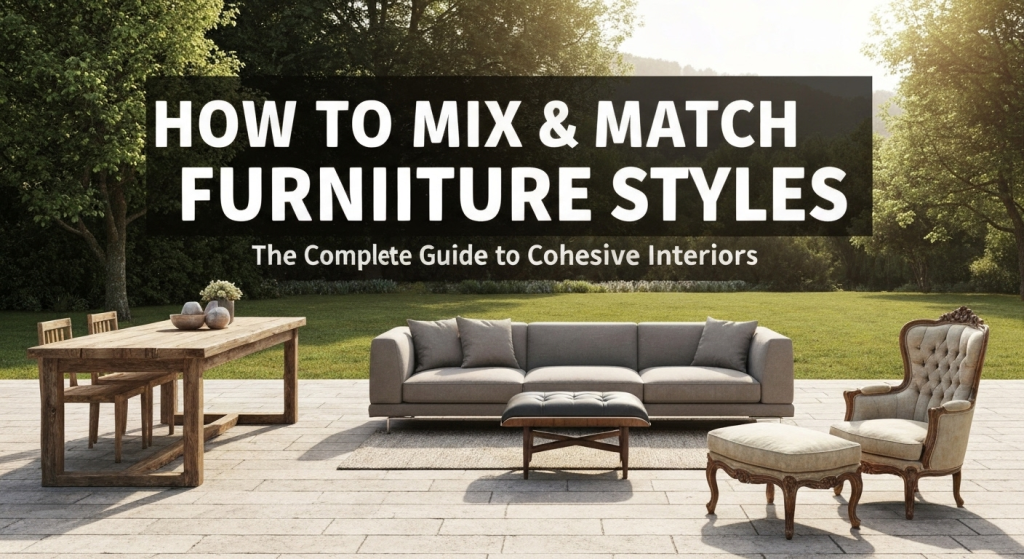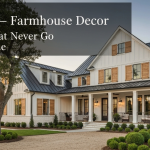Mixing furniture styles transforms ordinary rooms into extraordinary spaces that tell your unique story. As an interior designer with five years of hands-on experience helping homeowners create stunning interiors, I’ve witnessed countless transformations where strategic style mixing elevated bland spaces into magazine-worthy rooms.
My name is Richard Boren, and I’ve spent the last five years perfecting the art of furniture style mixing across residential and commercial projects. From Victorian homes in San Francisco to modern lofts in downtown Chicago, I’ve learned that successful style mixing isn’t about throwing random pieces together—it’s about understanding design principles that create harmony from apparent chaos.
The key lies in finding the sweet spot between contrast and cohesion. Too much matching creates boring spaces that lack personality. Too much mixing without purpose creates visual confusion that makes rooms feel chaotic and uncomfortable.
Understanding the Foundation: What Makes Furniture Style Mixing Work
Style mixing succeeds when you establish clear connections between different pieces. These connections act as invisible threads that weave disparate elements into a cohesive whole.
Scale and Proportion Create Unity Every piece in your room should relate to others through size relationships. A massive Victorian armoire demands equally substantial pieces nearby—perhaps a chunky modern coffee table or substantial mid-century sofa. Mixing delicate Queen Anne chairs with heavy industrial pieces creates awkward tension unless you bridge them with medium-scale transitional elements.
Color Provides the Common Thread Color serves as your most powerful unifying tool. A warm wood tone repeated across a Danish modern credenza, rustic farmhouse table, and traditional Windsor chair creates instant connection despite their different origins. Similarly, a consistent accent color—navy blue cushions on both your contemporary sectional and vintage bergère chair—links different eras seamlessly.
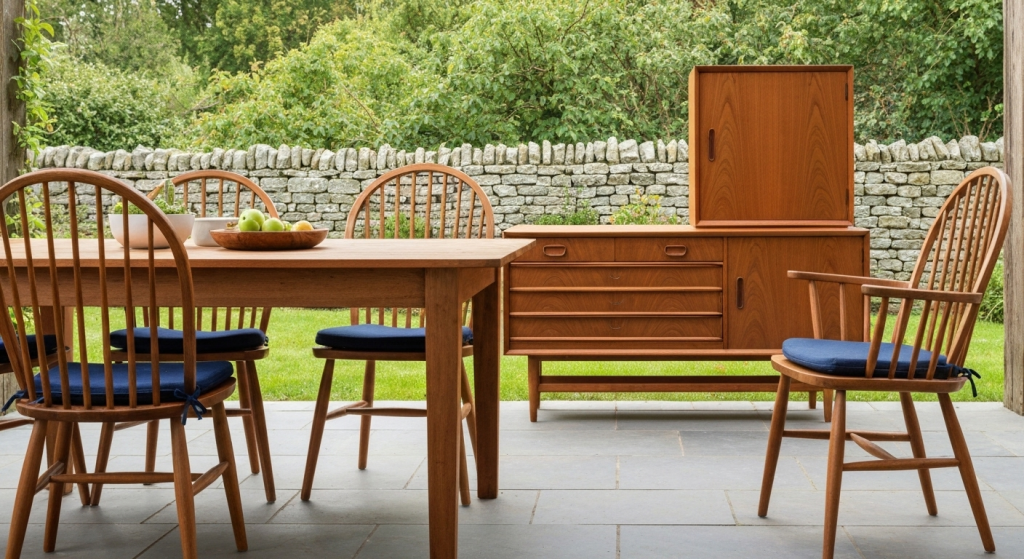
Texture Adds Visual Interest Contrasting textures prevent mixed styles from feeling flat. Pair smooth surfaces with rough ones, shiny with matte, hard with soft. A sleek glass coffee table gains warmth when paired with a nubby wool rug and distressed leather sofa.
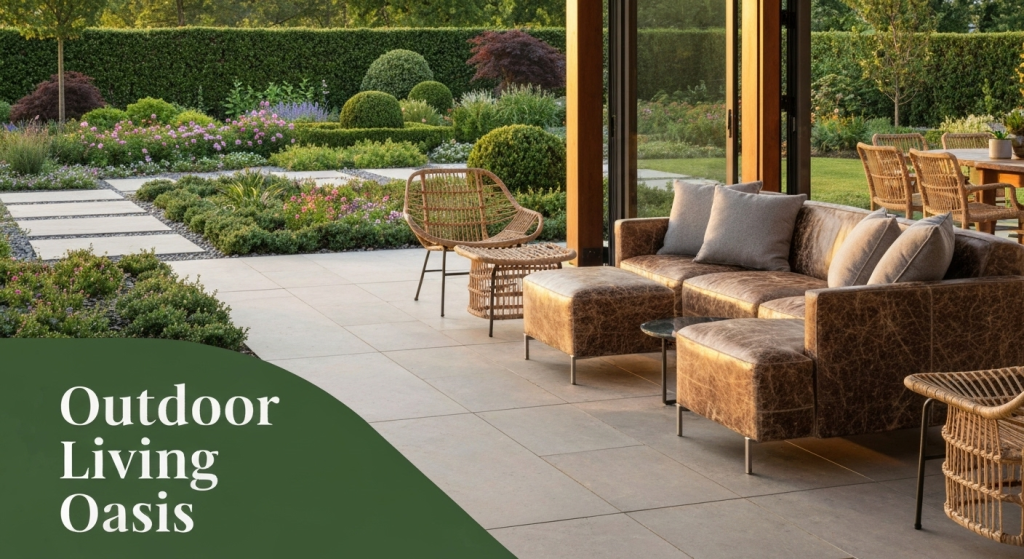
The Psychology Behind Successful Style Mixing
Understanding why certain combinations work helps you make confident decisions. Our brains naturally seek patterns and connections. When we enter a room, we subconsciously look for relationships between elements.
Successful mixed rooms provide enough similarity to feel cohesive while offering enough contrast to maintain visual interest. This balance engages viewers without overwhelming them.
During my years working with clients, I’ve noticed that rooms with intentional style mixing feel more collected and personal than perfectly matched showroom displays. They suggest a life well-lived, travels taken, and treasures collected over time.
Choosing Your Anchor Style: The 60-30-10 Rule
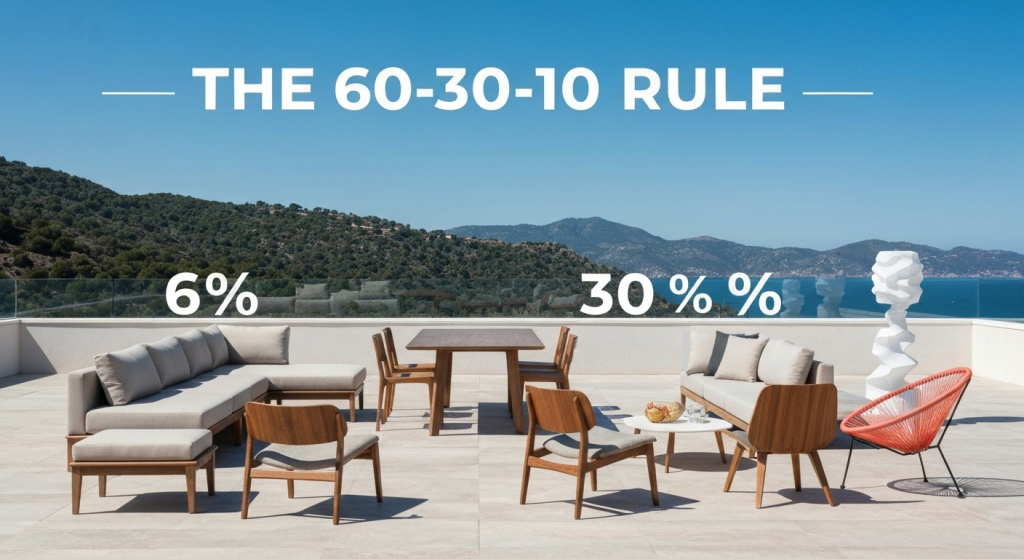
Every successfully mixed room needs a dominant style that provides stability. This anchor style should comprise about 60% of your furniture choices.
Selecting Your Primary Style Your anchor style should reflect your lifestyle and the room’s architecture. A 1920s Tudor home naturally supports traditional or transitional pieces as the foundation, while a contemporary open-plan space might anchor best with modern or mid-century pieces.
Consider your daily habits. Families with young children might choose durable, casual styles like farmhouse or contemporary as their foundation. Empty nesters might prefer the elegance of traditional or the sophistication of mid-century modern.
Adding Secondary Elements (30%) Your secondary style should complement your anchor while providing contrast. If modern serves as your anchor, consider adding warm wood pieces from the mid-century or Scandinavian styles. Traditional anchors pair beautifully with rustic or industrial accents.
Accent Pieces for Impact (10%) Reserve your boldest contrasts for accent pieces—a single statement chair, unique lighting, or standout artwork. These pieces should surprise and delight without overwhelming the overall composition.
Mastering Color Coordination Across Different Styles
Color coordination makes or breaks mixed-style rooms. Here’s my proven approach:
Establish a Neutral Foundation Start with a neutral base—walls, major upholstery, and large rugs in whites, grays, beiges, or other understated tones. This foundation allows different furniture styles to coexist without competing for attention.
Choose Three Main Colors Limit your palette to three main colors plus neutrals. One should dominate, one should support, and one should accent. This restraint prevents visual chaos while allowing for style variety.
Repeat Colors Strategically Each of your three colors should appear at least three times throughout the room. This creates visual rhythm that unifies different furniture pieces. A navy accent might appear in throw pillows, a ceramic vase, and artwork matting.
Color Coordination Table
Primary ColorSecondary ColorAccent ColorStyle ExamplesWarm WhiteNatural WoodNavy BlueScandinavian + TraditionalCharcoal GrayBrass/GoldEmerald GreenIndustrial + Mid-CenturyCreamWarm BrownCoralFarmhouse + BohemianSoft GrayBlackYellowModern + Art Deco
Scale and Proportion: The Hidden Language of Design
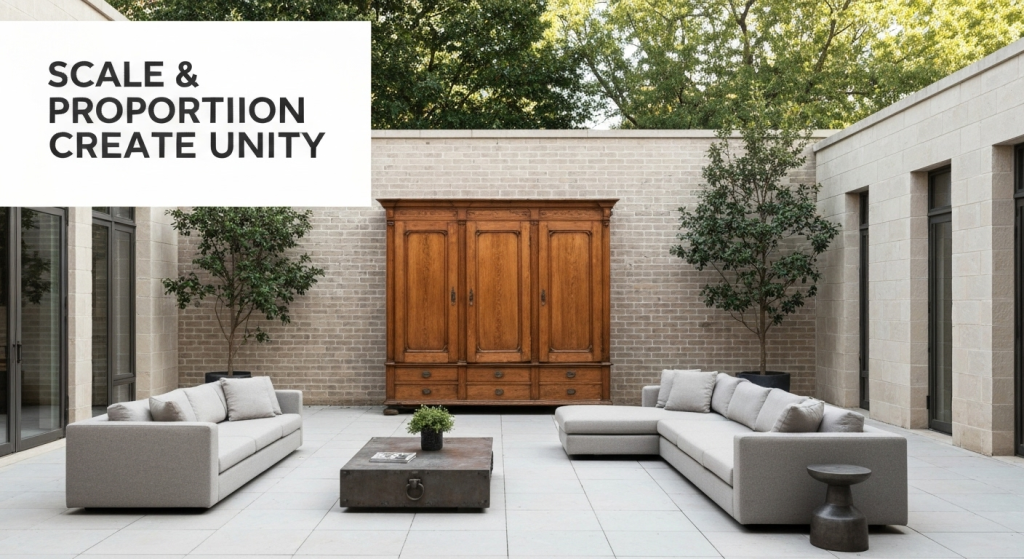
Scale relationships determine whether mixed pieces feel intentional or accidental. Understanding these relationships separates professional-looking rooms from amateur attempts.
Visual Weight Matters More Than Actual Weight A delicate gold metal chair might weigh less than a solid wood stool, but visually, the stool appears heavier due to its bulk and material. Balance visual weights, not actual ones.
Create Graduated Heights Vary furniture heights to create visual interest while maintaining balance. If your sofa sits at 36 inches, add a coffee table at 18 inches, table lamps at 24 inches (to lampshade bottom), and artwork with centers at 60 inches.
Follow the Rule of Odd Numbers Group accessories and smaller furniture pieces in odd numbers. Three candlesticks look more natural than four. Five books stack more appealingly than six.
During a recent project in a Minneapolis loft, I mixed a low-profile modern sectional with a tall traditional bookcase and medium-height industrial side tables. The varied heights created visual rhythm while the consistent black metal accents unified the different styles.
Texture Mixing: Adding Depth and Interest
Texture prevents mixed rooms from feeling flat or sterile. Layer different materials to create rich, engaging spaces.
Hard Versus Soft Balance Every room needs both hard and soft elements. Hard surfaces—wood, metal, stone—provide structure and durability. Soft elements—fabrics, rugs, cushions—add comfort and warmth.
Smooth Versus Textured Contrasts Pair smooth surfaces with textured ones for visual interest. A sleek lacquer dining table gains character when surrounded by upholstered chairs with nubby fabric or woven seats.
Natural Versus Manufactured Materials Combine natural materials like wood and stone with manufactured ones like metal and glass. This contrast adds authenticity to mixed-style rooms.
Texture Pairing Guide
Smooth TexturesRough TexturesSoft TexturesHard TexturesGlassJuteVelvetMetalLacquerBrickWoolStoneLeatherBurlapFaux FurConcretePolished WoodWoven BasketsCottonCeramic
Room-by-Room Style Mixing Strategies
Each room type presents unique opportunities and challenges for style mixing.
Living Rooms: The Style Mixing Showcase
Living rooms offer the most space and flexibility for style experimentation. Large furniture pieces can represent different styles while smaller accessories provide unifying elements.
Sofa Selection Strategy Choose your sofa in a neutral style that bridges different periods. A simple Chesterfield works with both traditional and industrial pieces. A clean-lined sectional pairs with modern, mid-century, or Scandinavian styles.
Coffee Table as Style Bridge Use your coffee table to introduce contrast. A rustic wood table softens a modern room, while a sleek glass top adds sophistication to traditional settings.
Accent Chairs for Personality Accent chairs provide the perfect opportunity for style mixing. Their smaller scale makes bold contrasts less risky than large pieces.
Bedrooms: Intimate Style Combinations
Bedrooms require more careful style mixing since the space feels more personal and intimate.
Bed Frame as Anchor Let your bed frame establish the room’s primary style. Everything else should support this choice while adding subtle contrasts.
Nightstand Mixing Opportunities Mismatched nightstands add character when they share common elements—similar heights, wood tones, or hardware finishes.
Storage Style Solutions Mix open and closed storage styles. A modern dresser might pair with a vintage trunk for blanket storage.
Dining Rooms: Formal Mixing Approaches
Dining rooms traditionally favor more formal approaches to style mixing.
Table and Chair Combinations The classic approach pairs a substantial table with chairs in a complementary but different style. A farmhouse table with mid-century chairs creates appealing contrast while maintaining functionality.
Lighting Statement Pieces Dining room chandeliers provide excellent opportunities for style contrast. An industrial pendant over a traditional table creates unexpected sophistication.
Storage and Display Balance Mix open display (floating shelves, glass-front cabinets) with closed storage (traditional buffets, modern credenzas) for both beauty and function.
Home Offices: Functional Style Integration
Home offices benefit from style mixing that supports both productivity and personal expression.
Desk Style Considerations Choose desk styles that reflect your work personality while complementing the room’s architecture. A traditional roll-top desk adds warmth to a contemporary space, while a clean-lined modern desk modernizes traditional surroundings.
Storage System Integration Mix storage types to balance function and style. Industrial shelving might hold books while a traditional filing cabinet conceals paperwork.
Seating Comfort and Style Office chairs must prioritize comfort, but you can choose styles that complement or contrast with your desk choice.
Common Mistakes and How to Avoid Them
Learning from common mistakes accelerates your style-mixing success.
Mistake 1: Too Much Contrast Without Connection Mixing styles without establishing clear connections creates visual chaos. Always identify at least two connecting elements between contrasting pieces.
Solution: Before adding a contrasting piece, identify how it connects to existing furniture through color, material, scale, or shape.
Mistake 2: Perfect Matching Avoiding all contrast creates sterile, showroom-like spaces lacking personality and visual interest.
Solution: Introduce controlled contrasts through accent pieces, textures, or materials while maintaining overall cohesion.
Mistake 3: Ignoring Room Architecture Fighting your room’s architectural style instead of working with it creates tension and makes style mixing feel forced.
Solution: Let architectural elements inform your style choices. Traditional moldings support classic furniture while exposed beams complement rustic or industrial pieces.
Mistake 4: Scale Mismatches Combining pieces with dramatically different scales without proper transitions creates awkward relationships.
Solution: Use medium-scale pieces to bridge large and small elements, creating smooth visual transitions.
Mistake 5: Color Overload Using too many colors prevents different furniture styles from feeling cohesive.
Solution: Stick to a three-color palette plus neutrals, ensuring each color appears multiple times throughout the room.
Budget-Friendly Style Mixing Tips
Style mixing doesn’t require expensive furniture. Smart strategies help you achieve professional results on any budget.
Start with What You Have Before buying anything new, assess your existing pieces. You might discover unexpected compatibility between items you hadn’t considered together.
Invest in Key Pieces Spend your budget on one or two substantial pieces that can anchor your style mix. A quality sofa or dining table provides a foundation for less expensive accent pieces.
Shop Secondhand Strategically Thrift stores, estate sales, and online marketplaces offer unique pieces perfect for style mixing. Focus on solid construction over current finish—you can always refinish or reupholster.
DIY Enhancement Projects Simple modifications can help disparate pieces work together. Painting chair legs to match table bases, or recovering cushions in coordinating fabrics creates visual connections.
Budget Allocation Guide
Budget RangeAnchor PiecesAccent PiecesAccessoriesUnder $200060%25%15%$2000-$500050%30%20%$5000-$1000045%35%20%Over $1000040%40%20%
Advanced Techniques: Professional-Level Style Mixing
Once you master the basics, these advanced techniques create truly sophisticated mixed-style interiors.
Layering Multiple Eras Successful rooms often incorporate elements from three or more style periods. The key is maintaining a clear hierarchy with one dominant style and supporting elements from other eras.
Creating Visual Flow Use sight lines to connect mixed pieces throughout your space. A brass accent on your coffee table might echo brass hardware on a distant bookcase, creating subtle connections across the room.
Seasonal Style Adjustments Change accessories and textiles seasonally while maintaining your core furniture mix. Summer might emphasize lighter textures and brighter accents, while winter brings warmer tones and cozier materials.
Personal Collection Integration Your personal collections—books, artwork, travel souvenirs—provide natural bridges between different furniture styles. Use these meaningful objects to create personal connections throughout mixed-style rooms.
Working with Professional Designers
Sometimes professional help accelerates your style-mixing success while avoiding costly mistakes.
When to Hire Help Consider professional assistance for major renovations, when mixing expensive pieces, or if you feel overwhelmed by choices. Designers can see possibilities you might miss while avoiding expensive mistakes.
Communicating Your Vision Collect inspiration images showing mixed-style rooms you love. Focus on explaining how spaces make you feel rather than specific products you want to purchase.
Budget Discussions Be upfront about your budget range. Experienced designers can work within most budgets while maximizing impact through strategic choices.
Implementation Phases Consider phased implementation spreading purchases over time. This approach allows you to live with choices before making additional investments.
Maintenance and Evolution of Mixed-Style Rooms
Successfully mixed rooms evolve over time as your needs and tastes change.
Seasonal Refresh Strategies Update mixed-style rooms through accessories rather than major furniture changes. New throw pillows, artwork, or lighting can shift the room’s emphasis while maintaining your core style mix.
Adding New Pieces When introducing new furniture, consider how it relates to existing pieces through your established color palette, scale relationships, and material connections.
Long-term Style Evolution Allow your rooms to evolve gradually rather than making dramatic changes all at once. This organic growth creates more authentic, collected-over-time feelings.
Frequently Asked Questions
How many different furniture styles can I mix in one room? Three to four styles work best for most rooms. One dominant style should comprise 60% of pieces, with remaining styles as supporting elements. More than four styles often creates visual confusion.
What’s the biggest mistake beginners make when mixing furniture styles? The biggest mistake is mixing styles without establishing clear connections. Every contrasting piece should relate to others through color, material, scale, or shape. Random mixing without purpose creates chaos.
How do I know if my style mixing is working? Successful mixed rooms feel cohesive and intentional rather than accidental. If guests comment positively on your decorating and the room feels comfortable to spend time in, your mixing is likely successful.
Can I mix furniture styles in small spaces? Yes, but use restraint. Limit yourself to two main styles in small spaces, connected through consistent color and material choices. Too much contrast in confined areas feels overwhelming.
Conclusion
Mixing furniture styles like a professional designer requires understanding the principles that create harmony from diversity. Success comes from establishing clear connections between different pieces through color, scale, texture, and material choices while maintaining a clear style hierarchy.
Remember that the best mixed-style rooms feel collected over time rather than purchased all at once. Start with a strong foundation, add contrasting elements gradually, and trust your instincts about what feels right in your space.
The goal isn’t perfection—it’s creating spaces that reflect your personality while feeling cohesive and comfortable. With practice and patience, you’ll develop the confidence to mix styles in ways that truly transform your home into a unique expression of your personal aesthetic.
Style mixing remains one of interior design’s most rewarding challenges. When done well, it creates spaces with depth, character, and timeless appeal that perfectly matched rooms simply cannot achieve.

